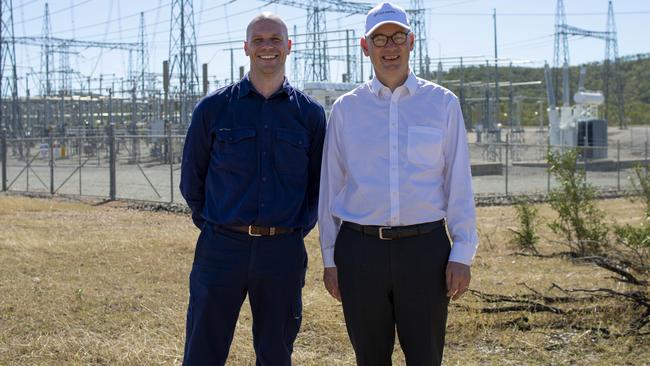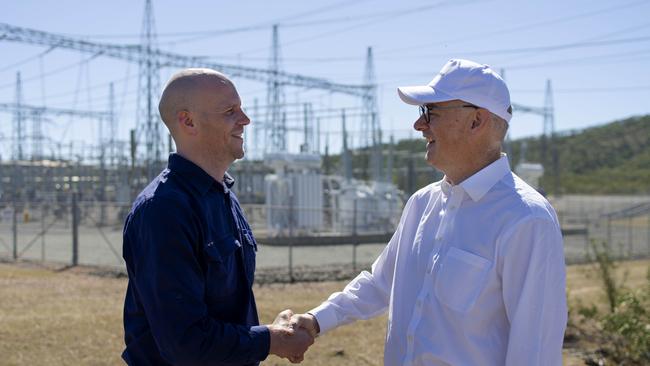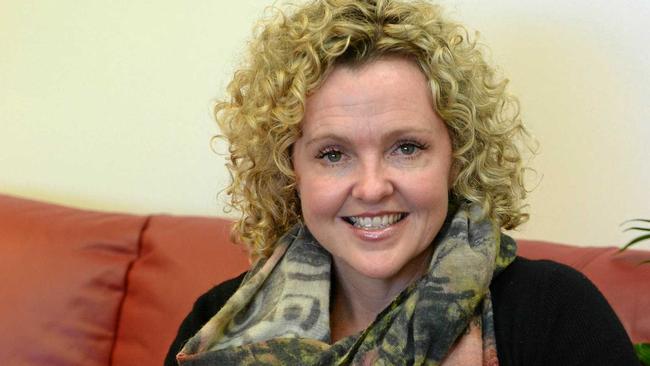What the UN Climate Change Conference of the Parties coal decision means for Mackay, Isaac and Whitsundays
Global leaders gathered in Glasgow at the start of the month to come to a decision about the future of energy coal. Here is how Mackay, Isaac and the Whitsunday regions will be affected by the change.

Business
Don't miss out on the headlines from Business. Followed categories will be added to My News.
While delegates at the global Climate Conference struggled to come to a consensus around the use of thermal coal use, Mackay’s growing shift towards alternative energy left the region sitting comfortably for the renewable world to come.
China and India, both importers of Australia’s thermal coal, baulked at the wording of a ‘phase-out’ from coal at last week’s 26th UN Climate Change Conference of the Parties.
In an overtime meeting of the world’s leaders in Glasgow, a decision was finally made among the delegates to instead focus on reducing coal – a clause that could still permit some reliance on the fossil fuel within thermal coal-reliant areas.
Mackay, however, is not one of them.
Greater Whitsunday Alliance CEO Kylie Porter said the Mackay, Isaac and Whitsunday regions were among many across the country to benefit from growing interest and investment in renewable energy.
She said the dark shadow cast upon the topic of fossil fuel was not one to worry the regions’ mining industry.

“They were trying to reach a general agreement around the use of energy coal by completly phasing out energy coal globally by the target date,” she said.
“It was watered down to a reduction in the use of energy coal as opposed to completely phasing it out.
“The reason is while we produce a significant amount of thermal/energy coal, we have a stronger focus and strong production on highly used metallurgical coal.
“What we produce in coal, between 70 and 75 per cent of it is metallurgical coal.
“Isaac and Whitsunday regions have active coal mines and the Isaac region has a combination of metallurgical and thermal coal mines.”
Metallurgical coal, which goes straight into the making of iron ore mined out of Western Australia, goes into the making of high quality steel.
“The metallurgical coal we have in this region actually produces lower emissions because the quality is so high,” Ms Porter said.
“They burn less of it to get the steel mills operating efficiently.”
While the move away from thermal coal will undoubtedly have an impact on the three regions, Ms Porter said the phase out and global focus on nations embracing alternative fuels was “a really important goal”.
“We still have significant amounts and reserves of thermal coal across the region … (but) as a region, we’re already producing a lot of renewable energy,” she said.
“There’s really significant solar farms already contributing directly into the energy network as well as the Clarke Creek wind farm – a very large wind operation.
“Other regions will start to come online in the next couple of years.
“There’s really significant moves to be able to embrace clean energy and we already are.”

The main impact the change will have on the regions is the export industry.
“Australia is a really big exporter of coal. We export far more than we use,” Ms Porter said.
“Our country is probably well on a journey to green energy ourselves. We need to look at how to create and export green energy.
“There is a focus in the country on hydrogen opportunities and getting their head around how to create these green options and have replacement export options.
“There’s a lot of thinking going on about how to take advantage of these green hydrogen opportunities.
“But our big buyers include developing nations which don’t have access to green energy technology and are still trying to bring hundreds of millions to the standard of living we take for granted. They want Australian coal to be able to do that.”




